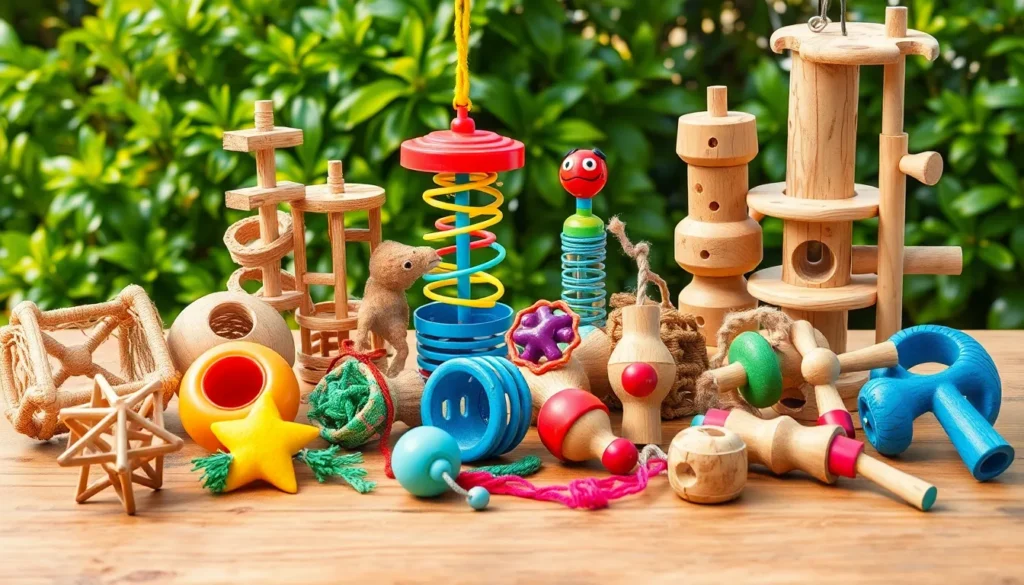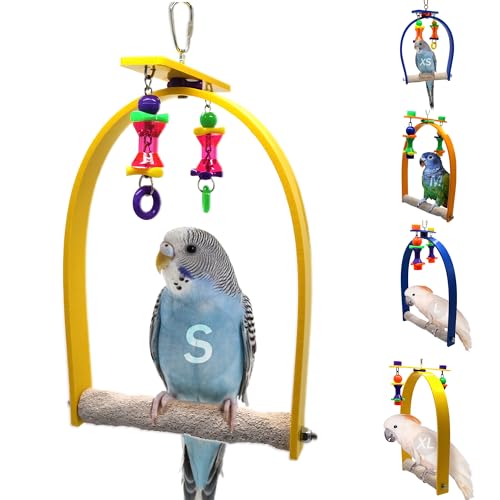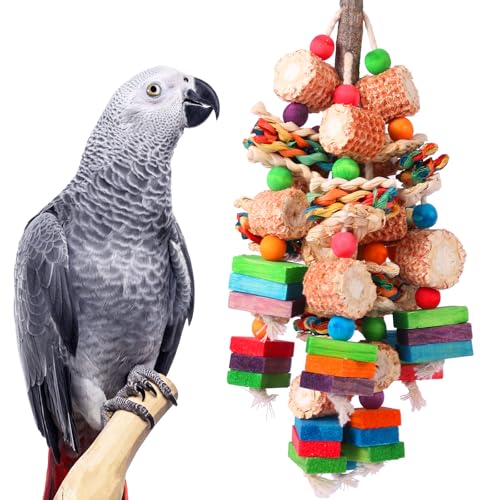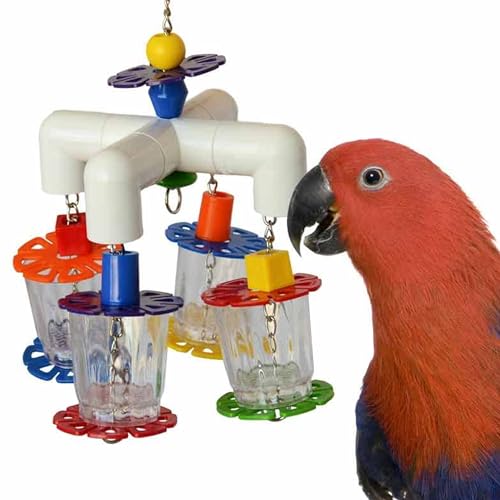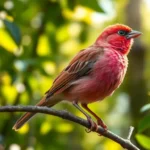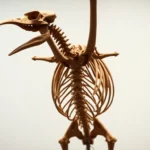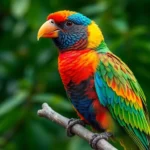We’ve all watched our feathered friends pace restlessly in their cages wondering what’s missing from their daily routine. The answer isn’t more food or a bigger cage – it’s mental stimulation through captivating bird toys that transform boredom into boundless entertainment.
Birds are incredibly intelligent creatures with complex emotional needs that mirror our own desire for fun and challenge. Without proper enrichment they’ll resort to destructive behaviors like feather plucking excessive screaming or cage aggression that’ll leave both you and your pet frustrated.
That’s where the right selection of bird toys becomes a game-changer for your avian companion’s wellbeing. From puzzle feeders that satisfy their foraging instincts to colorful climbing structures that encourage natural behaviors we’ll explore how strategic toy placement can revolutionize your bird’s happiness and health while strengthening the bond between you both.
Choose Interactive Puzzle Toys to Challenge Your Bird’s Mind
Interactive puzzle toys serve as powerful tools for keeping our feathered companions mentally sharp and emotionally balanced. These specialized bird toys transform daily activities into captivating challenges that prevent boredom and destructive behaviors.
Foraging Toys That Encourage Natural Behaviors
Foraging toys recreate the natural hunting experience that birds would encounter in the wild. We recommend choosing toys with hidden compartments where you can hide treats like nuts, seeds, or small pieces of fruit. Paper-wrapped foraging toys satisfy your bird’s instinct to shred while revealing tasty rewards inside.
Rotating foraging challenges keep your bird engaged throughout the week. Consider acrylic foraging wheels that require your bird to turn mechanisms to access treats, or wooden puzzle boxes with sliding panels. These toys typically range from simple treat-hiding designs to complex multi-step puzzles that can occupy an intelligent bird for hours.
Natural materials like palm leaves, cardboard tubes, and untreated wood make excellent DIY foraging opportunities. Fill these materials with your bird’s favorite snacks and watch as they methodically work through each layer to reach their prize.
Problem-Solving Games for Mental Stimulation
Problem-solving games challenge our birds to think critically and develop cognitive skills beyond basic foraging. Stacking toys with removable rings help birds understand sequencing and cause-and-effect relationships. Many birds enjoy the satisfying click of placing rings back onto their posts after removing them.
Logic puzzles with sliding doors or rotating chambers require birds to manipulate multiple components to access rewards. These advanced toys often feature adjustable difficulty levels, allowing us to increase the challenge as our birds master each stage. Popular options include treat-dispensing balls that require exact movements to release food.
Mirror-based puzzle toys combine visual stimulation with problem-solving elements, though we should monitor birds that become overly fixated on their reflection. Interactive games that require birds to match colors, shapes, or complete sequences provide excellent mental exercise while building important cognitive connections.
Select Chewable Bird Toys for Beak Health and Entertainment
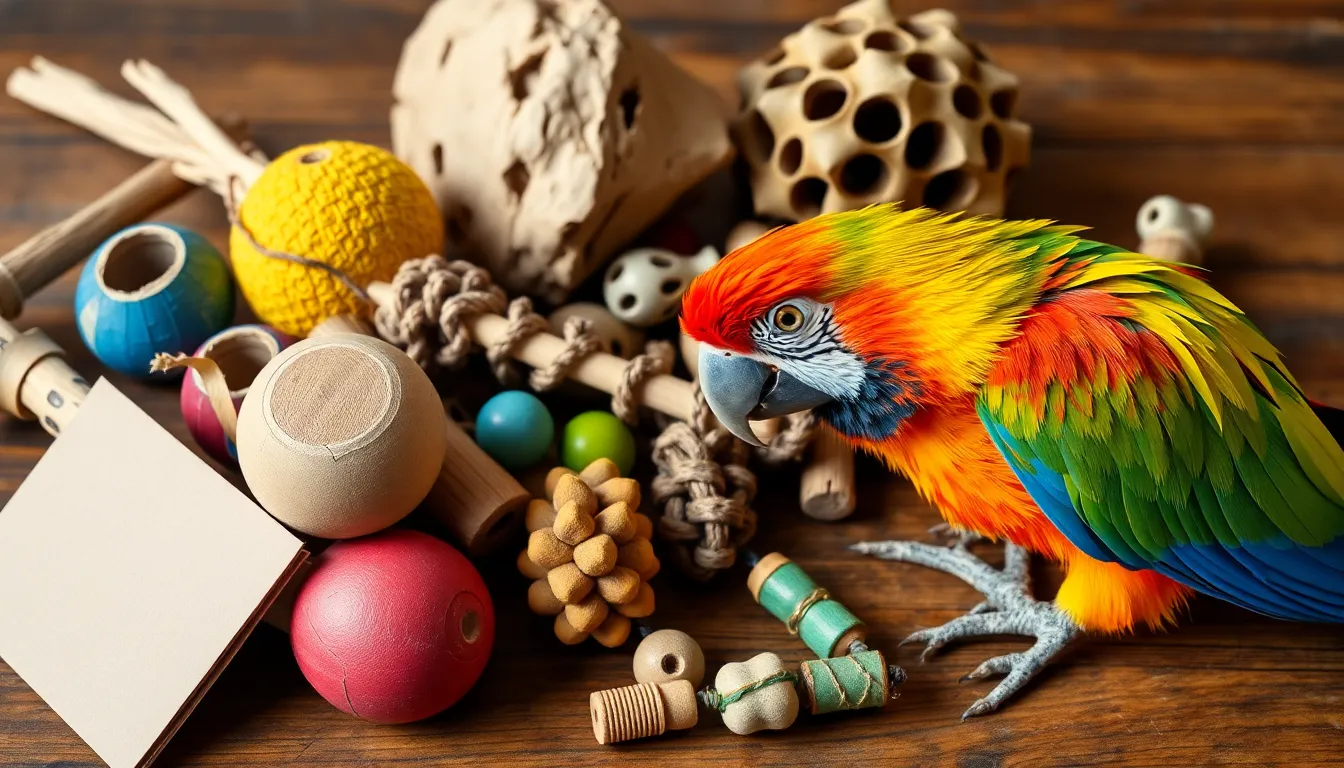
Chewing behavior serves as a natural instinct for birds, helping them maintain healthy beak length while providing essential entertainment that reduces stress and boredom.
Wooden Blocks and Natural Branch Perches
Untreated hardwood blocks offer the perfect chewing resistance that birds need to keep their beaks properly worn down. Apple, birch, and willow wood varieties provide safe options that won’t splinter or contain harmful chemicals like treated lumber might. Natural branch perches from fruit trees give birds varying diameters to exercise their feet while encouraging healthy beak maintenance through bark removal.
We recommend selecting blocks that are 2-3 times larger than your bird’s beak to ensure proper engagement without creating choking hazards. Balsa wood works well for smaller species like cockatiels, while larger parrots need denser woods such as maple or oak to provide adequate resistance. Rotate wooden toys weekly to prevent bacteria buildup and maintain your bird’s interest in their chewing materials.
Safe Paper and Cardboard Options
Unbleached paper products create excellent temporary chewing toys that satisfy your bird’s natural shredding instincts without breaking your budget. Phone books, paper towel tubes, and cardboard egg cartons provide hours of destructive entertainment that’s completely safe for consumption. Newspaper without colored inks works particularly well since birds can tear it into strips while exercising their beaks and claws simultaneously.
Corrugated cardboard boxes offer multilayered textures that challenge different beak strengths and provide varying levels of difficulty. Remove all tape, staples, and adhesives before giving cardboard to your bird to prevent ingestion of harmful materials. Paper cupcake liners make perfect single-use toys for smaller birds, while larger species enjoy destroying cereal boxes and paper bags for extended play sessions.
We suggest refreshing paper toys every 2-3 days to maintain cleanliness and prevent your bird from losing interest in their chewing activities.
Pick Colorful Hanging Toys to Keep Birds Active
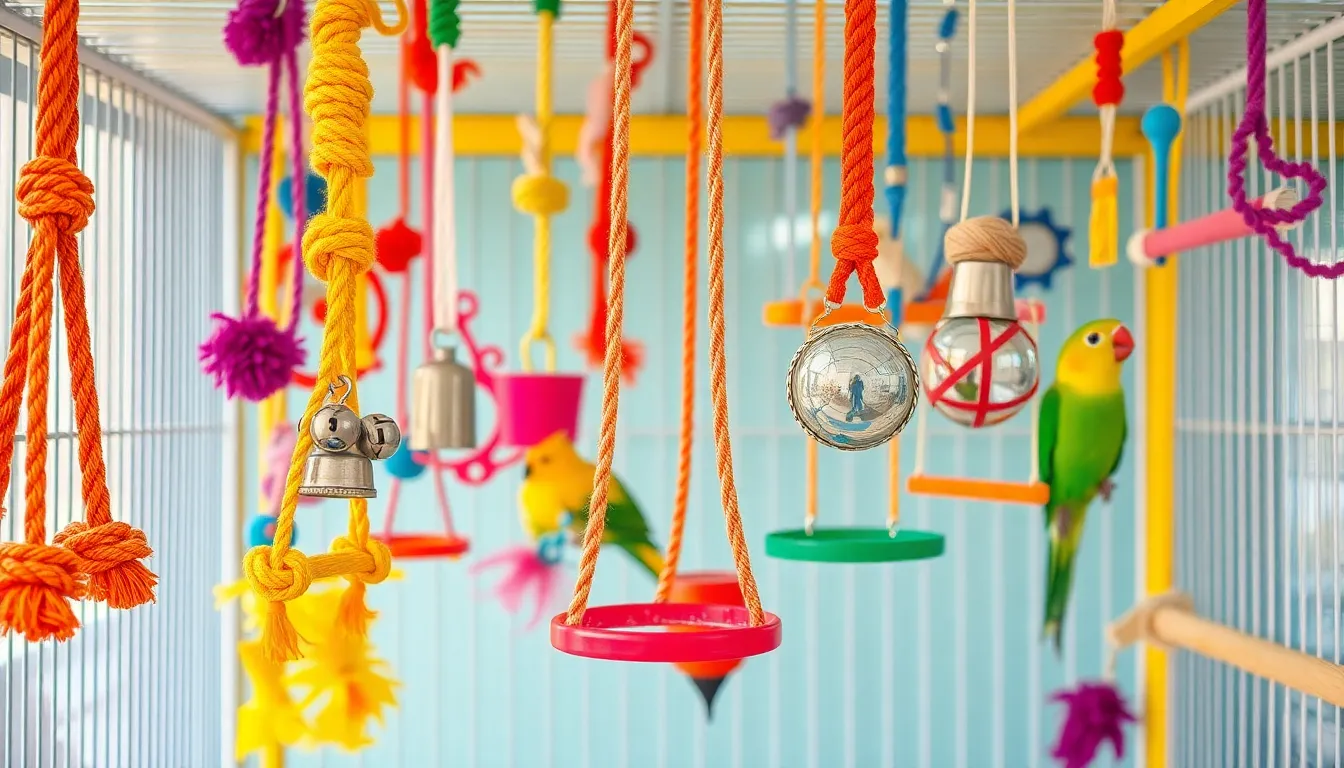
Vibrant hanging toys provide essential physical exercise while captivating birds through movement and visual stimulation. We’ve found that bright colors naturally attract birds and encourage active play throughout the day.
Rope and Fabric Swings for Exercise
Cotton rope swings offer excellent wing strengthening opportunities as birds grip and balance during play. We recommend selecting braided cotton or sisal materials that provide secure footing without fraying excessively. Birds develop better coordination when they navigate different swing heights and angles during their daily activities.
Fabric swings made from bird-safe fleece create cozy resting spots that double as exercise equipment. Position these swings at varying heights to encourage climbing and hopping between different levels. Natural hemp rope swings last longer than synthetic alternatives and provide better grip texture for bird feet.
Multiple swing placement creates an aerial playground that promotes cardiovascular health through active movement. We suggest installing 3-4 swings per cage to create flight paths and encourage birds to move between perches. Replace rope swings every 2-3 months to prevent bacterial growth and maintain structural integrity.
Bell and Mirror Combinations
Stainless steel bells attached to hanging toys provide auditory feedback that birds find rewarding during play sessions. We’ve observed that birds enjoy manipulating bells with their beaks and feet while developing dexterity skills. Choose bells with clappers that won’t break off and pose choking hazards to smaller bird species.
Acrylic mirrors combined with colorful beads create captivating visual displays that encourage pecking and exploration behaviors. Position mirrors at bird eye level to maximize interaction and prevent neck strain during extended play periods. We recommend limiting mirror exposure to 2-3 hours daily to prevent obsessive behaviors in some bird species.
Multi-element hanging toys featuring bells, mirrors, and colorful wooden blocks provide comprehensive stimulation for active birds. Rotate these combination toys weekly to maintain novelty and prevent boredom from setting in. Birds benefit most from toys that incorporate 4-5 different textures and materials within a single hanging unit.
Find Musical Bird Toys That Stimulate Auditory Senses
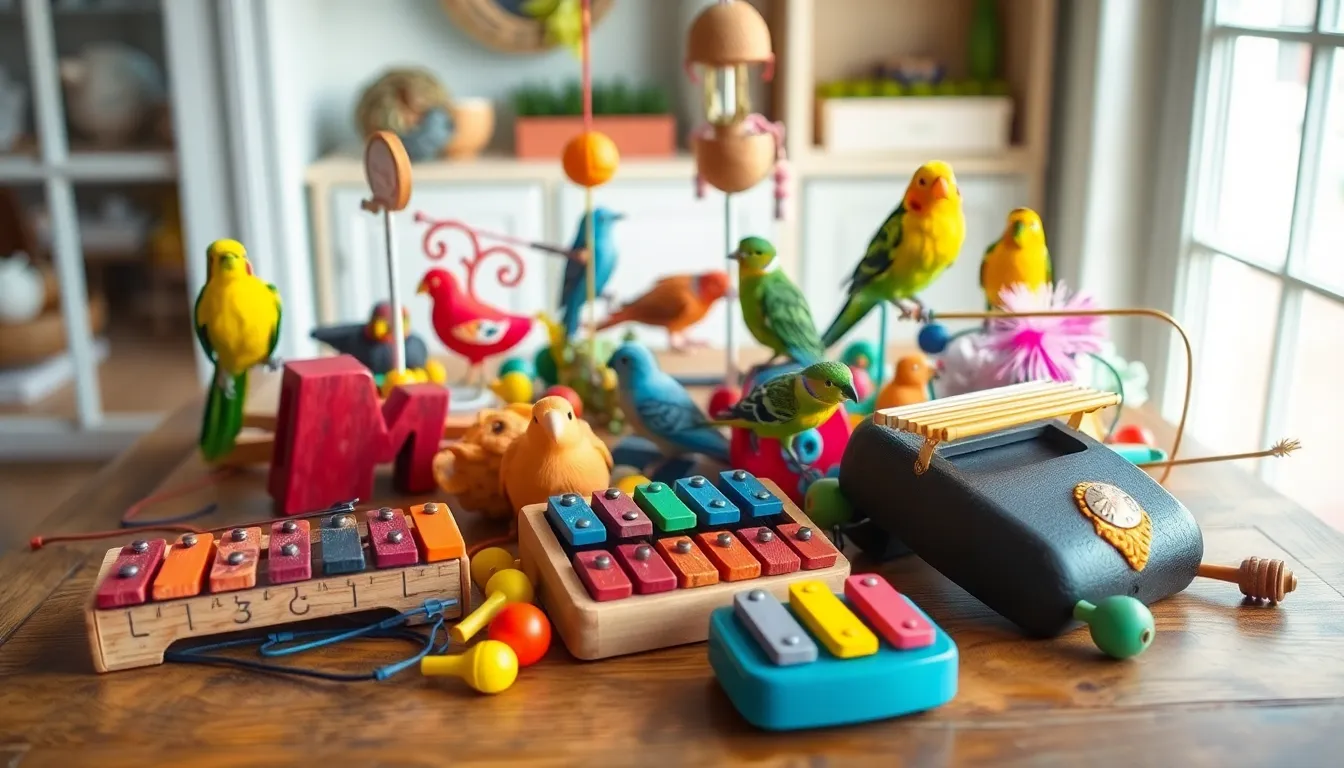
Musical bird toys engage your feathered friend’s natural love for sounds and rhythms. Birds possess exceptional hearing abilities and often respond enthusiastically to various musical elements in their environment.
Whistles and Sound-Making Devices
Training whistles help establish communication patterns between you and your bird while providing auditory enrichment. We recommend starting with simple two-note whistles that produce clear, consistent tones your bird can easily mimic. Acme whistles and Shepherds whistles work exceptionally well for this purpose.
Interactive sound buttons create opportunities for your bird to control their auditory experience actively. These battery-operated devices allow birds to press exact areas to trigger different sounds, from nature recordings to musical notes. Popular models include the PetSafe Smart Bell and various bird-exact sound panels.
Echo chambers and resonating toys amplify your bird’s natural vocalizations, encouraging them to explore different vocal ranges. Stainless steel bells with varied tones provide safe options, while hollow wooden blocks create interesting sound effects when your bird manipulates them. Rotating these devices weekly prevents habituation and maintains acoustic interest.
Wind chimes designed for birds offer gentle background sounds that many species find soothing. Choose models with larger, separated components to prevent entanglement, and ensure all materials are bird-safe metals or untreated wood.
Musical Instruments Designed for Birds
Mini xylophones with bird-safe materials encourage your feathered companion to create their own melodies. Look for instruments made from untreated hardwood bars suspended on cotton rope or stainless steel frames. These toys help develop coordination while satisfying your bird’s desire to strike and manipulate objects.
Bird pianos feature large, colorful keys that respond to pecking and stepping motions. Many electronic versions offer multiple sound settings, from traditional piano tones to nature sounds. We suggest models with volume controls and battery backup options for consistent play experiences.
Percussion instruments like small drums and shakers provide tactile and auditory stimulation simultaneously. Coconut shell drums and seed-filled gourds create natural percussion opportunities, while commercial bird drums often include multiple playing surfaces with different tones.
Harmonica holders allow birds to interact with these wind instruments safely, though supervision remains essential. Specially designed bird harmonicas feature larger holes and smoother edges to accommodate beak interaction without injury risk.
Consider Climbing and Perching Accessories
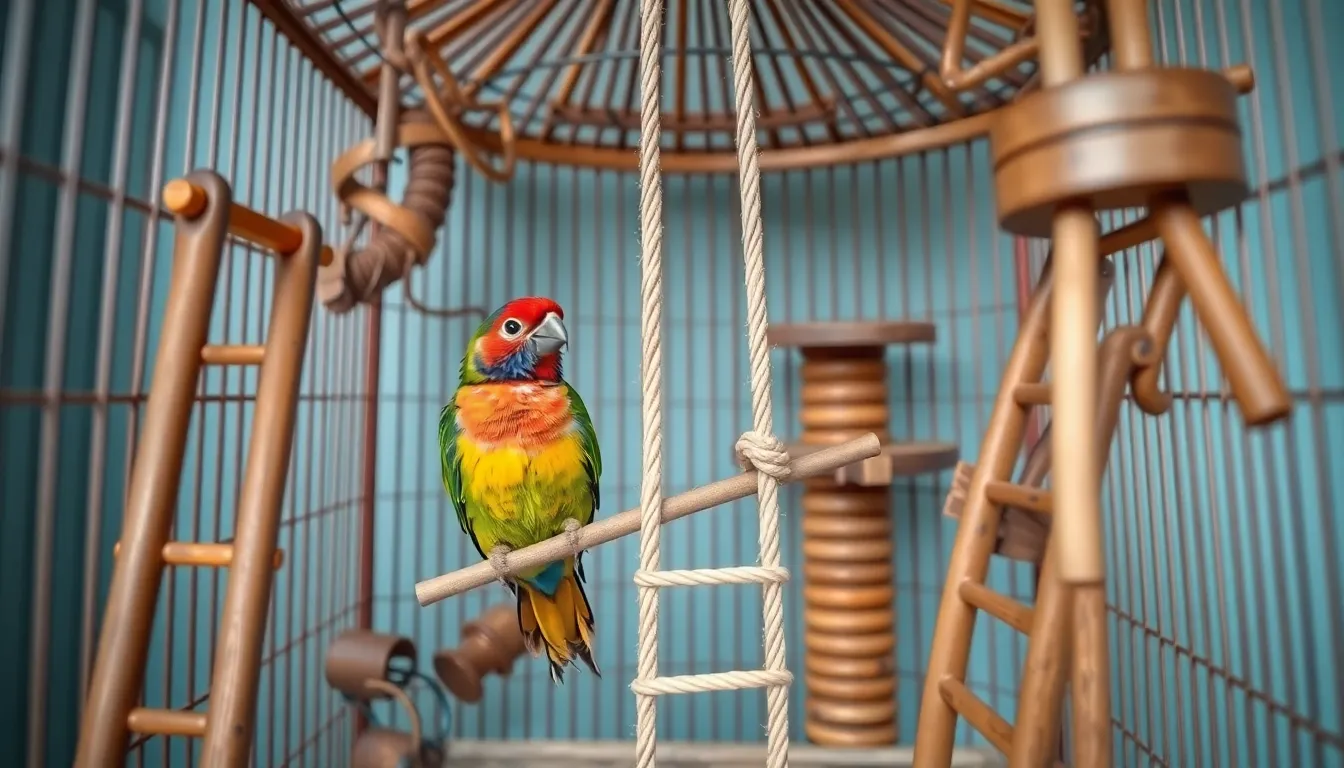
Building on our exploration of mental stimulation and interactive play, we’ll now examine climbing and perching accessories that promote physical fitness in our feathered companions.
Ladder Systems for Physical Activity
Rope ladders provide excellent wing strengthening exercises for birds of all sizes. These flexible climbing structures encourage natural movement patterns while building core muscle strength through constant balance adjustments. We recommend positioning rope ladders at different angles throughout the cage to create varied difficulty levels.
Wooden step ladders offer sturdy climbing surfaces that accommodate heavier bird species like cockatoos and macaws. Natural hardwood construction ensures durability while providing beak conditioning opportunities during climbing sessions. Place wooden ladders between perches to create continuous movement pathways that encourage active exploration.
Chain link ladders deliver unique tactile experiences through their metallic texture and sound. Stainless steel construction prevents rust while offering birds different grip challenges compared to rope or wood alternatives. Position chain ladders near favorite perching spots to entice birds into regular climbing activities.
Spiral climbing towers maximize vertical space utilization in smaller cages while providing extensive exercise opportunities. These corkscrew designs allow birds to climb continuously upward, building leg strength and coordination through repetitive motion. Install spiral towers in cage corners to create dedicated exercise zones.
Multi-Level Play Gyms
Tabletop play gyms transform any flat surface into an interactive bird playground outside the cage. These portable structures feature multiple perching levels, toy attachment points, and feeding stations that encourage extended play sessions. We suggest rotating tabletop gyms between rooms to provide environmental variety.
Freestanding tower gyms create comprehensive activity centers that serve as secondary living spaces for larger birds. Multi-level designs incorporate climbing branches, swing attachments, and foraging opportunities within single structures. Position freestanding gyms near windows to combine natural light exposure with physical activity.
Corner climbing trees use unused cage corners to maximize available play space efficiently. These specialized structures feature angled branches that create natural climbing challenges while supporting multiple birds simultaneously. Install corner trees with varying branch thicknesses to accommodate different foot sizes.
Platform based systems offer modular designs that expand vertically as birds develop climbing confidence. Removable platforms allow customization of difficulty levels while providing rest stations during extended climbing sessions. Connect platform systems with bridges and ladders to create comprehensive obstacle courses.
Explore Shredding Toys for Natural Destruction Instincts
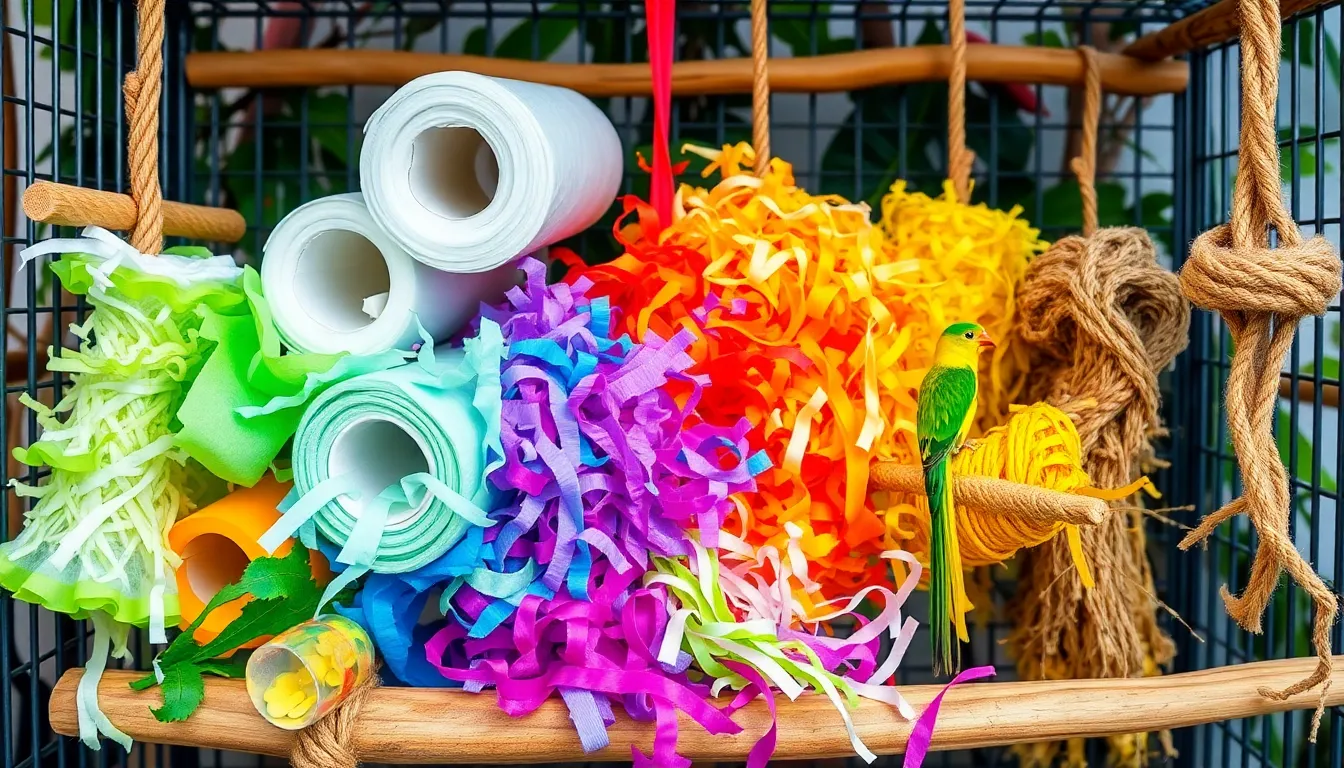
Birds possess an innate need to shred and destroy materials as part of their natural foraging behavior. Providing safe shredding toys channels this destructive energy into healthy activities while preventing damage to furniture and cage accessories.
Paper-Based Shredding Materials
Paper towels offer excellent shredding opportunities for small to medium-sized birds like cockatiels and conures. We recommend using unbleached, dye-free paper towels that birds can safely consume during their shredding sessions. Hanging these materials from cage bars creates captivating vertical play zones.
Coffee filters provide thin, easily tearable material that satisfies birds’ urge to create confetti-like pieces. These circular filters work particularly well for budgerigars and lovebirds who enjoy making small, manageable strips. Organic, unbleached filters ensure complete safety if birds ingest small amounts.
Newspaper sections become interactive puzzle elements when folded or crumpled into various shapes. Daily newspapers contain soy-based inks that won’t harm birds, making them budget-friendly shredding options. Creating newspaper “foraging bags” filled with treats encourages both shredding and problem-solving behaviors.
Cardboard toilet paper rolls transform into exciting destruction projects for birds of all sizes. We stuff these tubes with smaller paper pieces or treats to create multi-layered shredding experiences. Cutting slots or holes in the rolls adds complexity and extends playtime significantly.
Coconut and Natural Fiber Options
Coconut husks provide tough, fibrous material that challenges even large parrots like macaws and African greys. These natural shells require important effort to break down, offering extended entertainment periods. We recommend splitting husks into smaller pieces for medium-sized birds to prevent overwhelming them.
Palm fronds create long, stringy shredding material that mimics what birds would encounter in tropical environments. These naturally dried leaves satisfy birds’ instincts to strip vegetation for nesting materials. Organic palm fronds ensure no pesticide residues remain on the shredding surfaces.
Sisal rope fibers offer varying difficulty levels depending on how tightly they’re woven together. Loosely braided sisal allows easy separation for smaller birds, while tightly wound versions challenge larger species. Natural sisal contains no synthetic additives that could harm birds during consumption.
Coconut fiber mats provide extensive shredding territory that can occupy birds for hours or even days. We cut these mats into manageable sections and attach them to cage walls or play stands. The varying fiber lengths create different textures that maintain birds’ interest over extended periods.
Banana leaves deliver soft, pliable material that tears easily into satisfying strips and pieces. These leaves work especially well for birds who prefer gentler shredding experiences compared to tougher materials. Dried banana leaves maintain their structural integrity while remaining safe for consumption.
Look for Social and Bonding Bird Toys
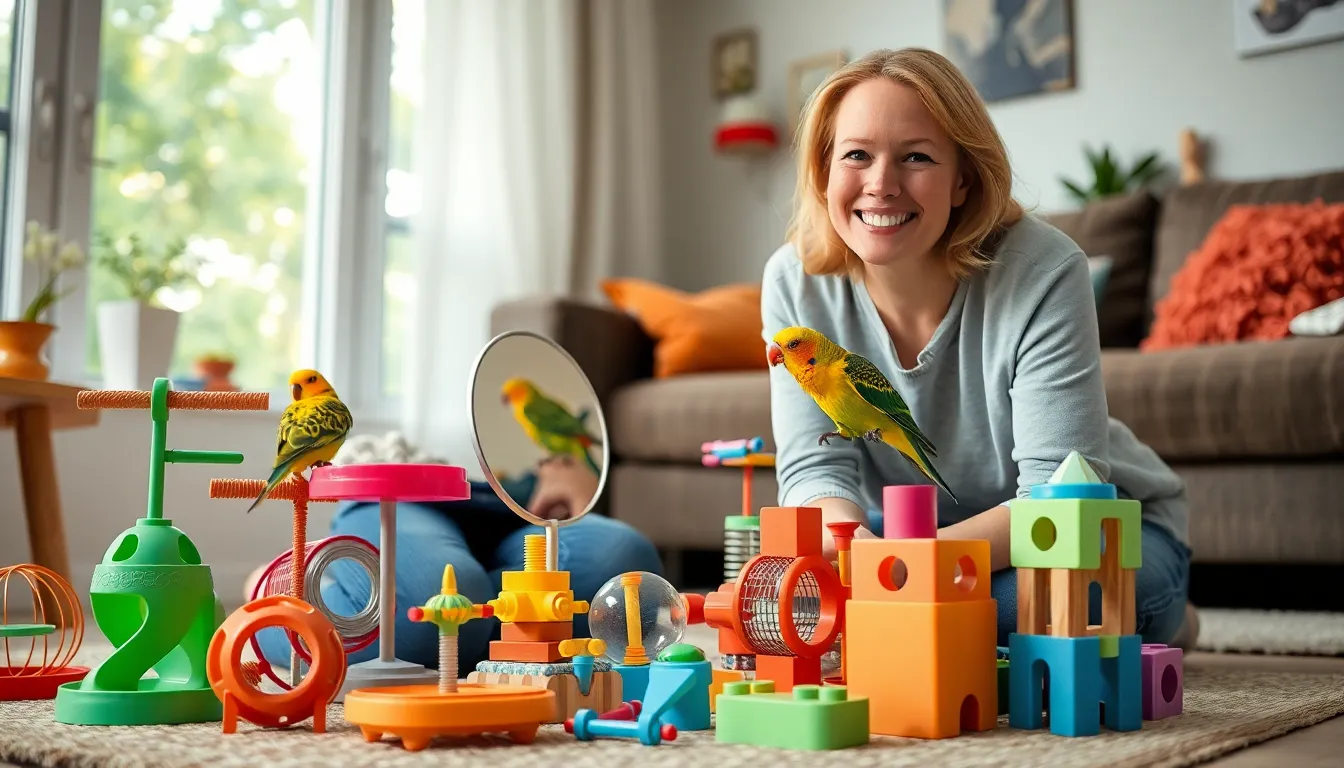
Social interaction remains crucial for bird mental health, especially when developing relationships with both owners and cage companions. We’ll explore toys that foster meaningful connections and prevent loneliness in our feathered friends.
Companion Mirrors for Single Birds
Acrylic mirrors provide single birds with visual companionship when properly introduced. We recommend positioning mirrors at beak height to encourage natural preening behaviors and social vocalizations. Stainless steel mirrors offer durability and easy cleaning while reflecting clear images that engage solitary birds.
Safety protocols require limiting mirror exposure to 2-3 hours daily to prevent obsessive bonding. We suggest rotating mirror placement weekly to maintain healthy interest levels and avoid territorial behaviors. Remove mirrors immediately if birds show signs of aggression or excessive attachment to their reflection.
Mirror alternatives include companion bird sounds through small speakers or recorded bird chatter. We’ve found that gentle background birdsong recordings help single birds feel less isolated during owner absence. Interactive mirror toys that move or produce sounds create more captivating experiences than static reflective surfaces.
Interactive Toys That Require Owner Participation
Training clickers establish communication pathways between birds and owners through positive reinforcement techniques. We recommend starting with simple target training using colorful wooden dowels or plastic pointers. Food reward dispensers that require owner activation encourage birds to seek human interaction during playtime.
Puzzle feeders designed for two-person operation strengthen bonds while providing mental stimulation. We suggest treat-dispensing toys that require owners to hold one end while birds manipulate the other. Rotating puzzle wheels work best when owners assist with initial movements before birds learn independent operation.
Communication boards featuring large colored buttons allow birds to request exact interactions from their owners. We’ve observed important bonding improvements when birds successfully communicate desires for treats, scratches, or playtime. Voice recording buttons that capture owner phrases create personalized interactive experiences that reinforce human-bird relationships.
Cooperative building toys include wooden blocks and safe connecting pieces that owners and birds construct together. We recommend starting with simple tower-building exercises that require teamwork and patience. String bead activities provide excellent fine motor skill development while fostering collaborative play between birds and their human companions.
Evaluate Safety Features in All Bird Toy Selections
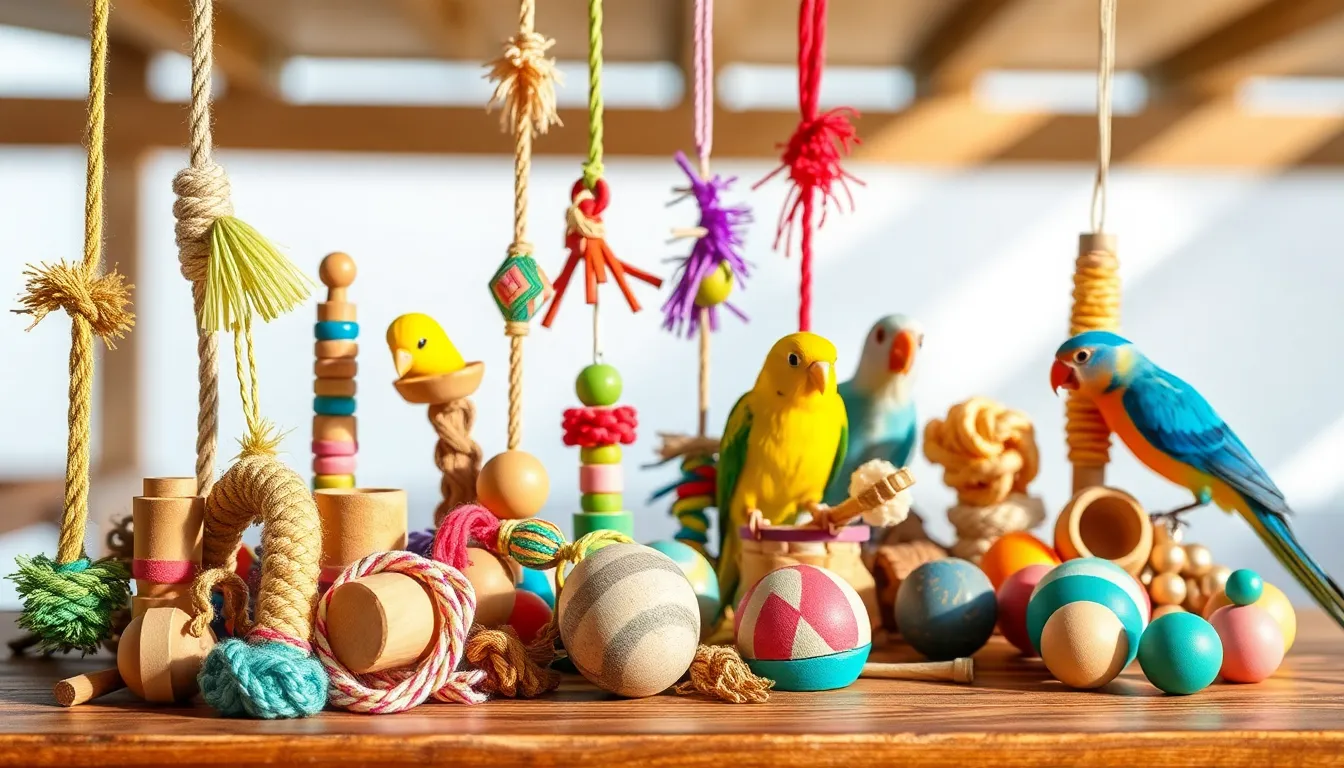
We must prioritize our bird’s wellbeing by carefully examining every toy’s safety features before purchase. Thorough evaluation prevents accidents and ensures our feathered friends can play without risk.
Non-Toxic Materials and Finishes
Untreated wood varieties provide the safest foundation for bird toys. We recommend selecting toys made from apple, birch, willow, or pine wood that hasn’t been chemically treated or stained. Painted surfaces should feature food-grade, water-based paints specifically formulated for pet products.
Natural dyes offer vibrant colors without compromising safety. Vegetable-based colorants like beet juice, turmeric, and spirulina create appealing hues that won’t harm our birds if ingested. Avoid toys with synthetic dyes or chemical finishes that can cause digestive issues.
Stainless steel components resist rust and corrosion better than other metals. We choose toys featuring stainless steel chains, bells, and connectors over zinc-plated or galvanized hardware. Galvanized metals contain dangerous levels of zinc that can poison birds through regular contact.
Food-grade materials ensure safe interaction during play sessions. Acrylic plastics marked as food-safe, natural cotton ropes without synthetic treatments, and untreated leather strips meet safety standards. Check manufacturer labels for FDA approval or pet-safe certifications before purchasing.
Proper Sizing to Prevent Choking Hazards
Appropriately sized components match our bird’s beak and throat dimensions. We select toys with parts that are either too large to swallow completely or small enough to pass safely through our bird’s digestive system. Medium-sized birds like cockatiels require components between 0.5 and 2 inches in diameter.
Rope thickness should correspond to our bird’s size and chewing strength. Thin cotton strings work well for budgies and canaries, while thicker braided ropes suit larger parrots like macaws and cockatoos. We replace frayed ropes immediately to prevent loose fiber ingestion.
Bell openings need careful measurement to avoid leg or head entrapment. Choose bells with openings smaller than our bird’s head or completely enclosed designs. Traditional jingle bells pose entrapment risks for curious birds who might get their beaks or feet stuck.
Chain link spacing prevents toe injuries and entanglement accidents. We look for chains with links spaced appropriately for our bird’s foot size, avoiding gaps that could trap toes or claws. Quick-link connectors should close securely without sharp edges that could cut delicate skin.
Conclusion
Choosing the right bird toys transforms our feathered companions’ daily lives from mere survival to active engagement and joy. We’ve seen how the perfect combination of mental stimulation physical exercise and social interaction creates happier healthier birds who thrive in their environments.
The investment in quality toys pays dividends through reduced behavioral problems stronger bonds with our pets and peace of mind knowing we’re meeting their complex needs. Remember that variety rotation and safety should guide every toy selection we make.
Our birds deserve enriching experiences that challenge their intelligence satisfy their instincts and keep them physically active. With the right toys we’re not just preventing boredom – we’re unlocking our birds’ full potential for happiness and well-being.
Frequently Asked Questions
Why do birds need mental stimulation toys?
Birds are highly intelligent creatures that require mental engagement to prevent destructive behaviors like feather plucking and excessive noise. Without proper stimulation, they can become bored, stressed, and develop behavioral problems. Mental stimulation toys help maintain their emotional balance, cognitive health, and overall well-being while strengthening the bond with their owners.
What are the best puzzle toys for birds?
Interactive puzzle toys that challenge birds’ problem-solving skills are ideal. Foraging toys with hidden compartments for treats mimic natural hunting behaviors, while stacking toys and logic puzzles help develop cognitive abilities. These toys should rotate regularly to maintain novelty and prevent boredom.
Are chewable toys safe for birds?
Yes, when made from appropriate materials. Untreated hardwood blocks from apple, birch, and willow trees are safe and help maintain beak health. Natural branch perches from fruit trees also provide safe chewing options. Always ensure toys are properly sized and rotate wooden toys weekly to prevent bacteria buildup.
What climbing structures are recommended for birds?
Rope ladders, wooden step ladders, and chain link ladders provide excellent exercise opportunities. Multi-level play gyms, both tabletop and freestanding options, create interactive environments outside the cage. Corner climbing trees and platform-based systems maximize space while encouraging active exploration and physical fitness.
How do musical toys benefit birds?
Musical toys stimulate birds’ exceptional hearing abilities and encourage natural vocalizations. Training whistles improve communication, while interactive sound buttons allow birds to control their auditory experiences. Mini xylophones, bird pianos, and wind chimes provide creative outlets and soothing background sounds.
What safety features should I look for in bird toys?
Always choose non-toxic materials like untreated wood and food-grade finishes. Ensure proper sizing to prevent choking hazards, with appropriate rope thickness and bell designs that avoid entrapment. Regularly inspect toys for wear and replace damaged items immediately to maintain a safe play environment.
Are mirrors safe for birds?
Acrylic mirrors can be beneficial for single birds when used properly. However, limit exposure to prevent obsessive behaviors and ensure proper placement. Consider alternatives like recorded bird sounds or interactive mirror toys that provide social stimulation without encouraging unhealthy fixations.
What are good shredding toy options?
Natural materials like coconut husks, palm fronds, sisal rope, and banana leaves offer varying challenge levels. Paper-based options include unbleached paper towels, coffee filters, and cardboard toilet paper rolls. These toys satisfy birds’ natural destruction instincts while protecting furniture and providing safe entertainment.

